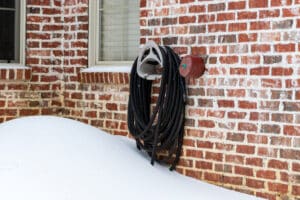Many homeowners, sooner or later, find out that water around the foundation is a ticking time bomb. Continuous accumulation of rainwater can weaken and shift the dirt. The result is more pressure on the foundation walls. Good drainage is the first step toward accomplishing a dry basement.
Many factors come together to help keep your home dry when heavy rains come through, let’s take a look at what you can do to prevent water damage:
1. Soil Grade and Surface Water
When the soil near your foundations settles, it can create a dip around the foundation’s edge. This can cause rainwater to form puddles that could seep into your foundation. The solution is to create a slope of soil around your home to ensure that water doesn’t pool and drains away from your home.
You will want to use dense soil for proper grading, and make sure it slopes at least six inches for every 10 feet from your foundation. You will want to avoid sand and mulch, as they allow water to seep into the foundation, making the problem worse. Be careful of poorly compacted backfill, though, because that will soon mean that the surface will slope back toward the house.
2. Exterior drainage
Installing an exterior drainage system is another way to keep water away from the foundation. At Missouri Foundation and Foam, we recommend installing a pipe to direct water away from the foundation. We start by digging a trench around the house and then lay a drainpipe with holes in the trench. This is then covered with gravel and topped with soil. This is a great solution if your yard tends to saturate and make the water flow back toward the house.
3. Curtain drains
If your home is at the bottom of a hill, you may want to consider installing curtain drains. Curtain drains go along the edge of an incline to help prevent rain water to pool near your foundation. Much like the exterior drainage system, curtain drains are in stalled by digging a trench near your home’s foundation and laying a pipe inside. The pipe is then covered with stone and fill in the area. It will appear as a stripe of stone in your yard. Curtain drains must be paired with other exterior drainage measures. They do prevent the water buildup, but they will not stop water from reaching the house from other directions.
4. Gutters.
You can prevent foundation damage by installing an efficient gutter system and downspouts. A clog-free gutter prevents water spills or overflows while the downspouts channel water away from your foundation. Ensure your downspouts are placed on sloping surfaces at least 10 feet from the foundation to ensure all rainwater coming from your gutters flows away from your home.
5. Trees:
Roots are not the only part of the tree that could damage your foundation, trees need water to grow and tend to pull moisture from the soil, which can lead to more settlement of the soil surrounding your home. According to the U.S. Department of Housing and Urban Development, trees should be planted no closer to the foundation than their eventual height. This prevents tree roots from filling perimeter drains and inhibits the tree from sucking all the water from the soil.
Finally, remember that it is much easier to do foundation drainage right in the first place than to repair it later.
Schedule Exterior Drainage Services Today
Protect your home from excess moisture and flooding with the experts at Missouri Foundation & Foam. Contact us today for a free consultation on waterproofing the basement, crawl space, or foundation of your home.





